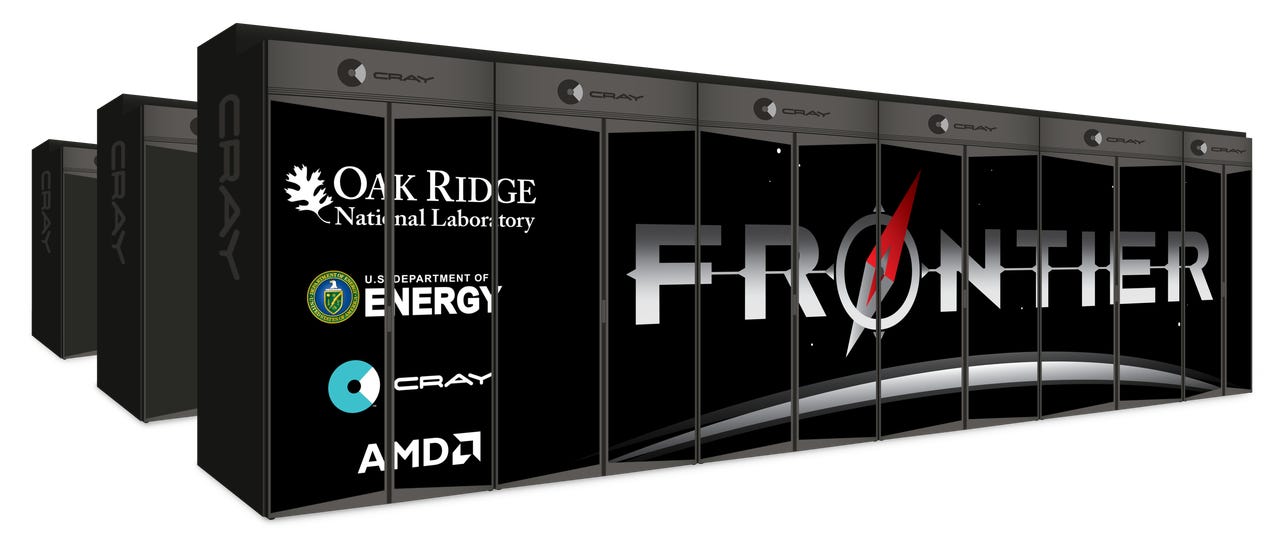AMD, Cray to build 1.5 exaFlop Frontier supercomputer for Oak Ridge National Lab


Featured
The U.S. Department of Energy, along with Oak Ridge National Laboratory, AMD and Cray, announced plans for a more than 1.5 exaFlop supercomputer named Frontier. The $600 million exascale system -- built on AMD's EPYC CPUs and Radeon Instinct GPU processors, as well as Cray's Shasta architecture and Slingshot network -- is set to become the world's fastest supercomputer when it arrives at the lab in 2021.
In a press briefing, Oak Ridge lab director Thomas Zacharia said Frontier will be most powerful AI machine anyone has ever seen, with every component purpose built for supercomputing performance. Once live, Frontier will be used to research and model the underlying science of weather, sub-atomic molecular structures, genomics, and physics.
AMD chief executive Lisa Su said both the CPUs and GPUs were fully optimized for supercomputing and AI using a future version of its Zen architecture.
"The custom fabric between the CPU and GPU allows for the most efficient communication between these devices," Su said.
Cray CEO Pete Ungaro said Frontier will be more powerful than the top fastest supercomputers combined. He described an exaFlop as the equivalent to a quintillion calculations per second. In more basic terms, if everyone on Earth carried out one calculation per second, it would take more than six years to perform as many calculations as Frontier will be able to in a single second, said Ungaro. For scale, Ungaro said Frontier will weigh as much as 35 school buses and be the size of two full basketball courts.
Frontier will compete against a $500 million, 1 exaFlop supercomputer called Aurora set to arrive in 2021 at Argonne National Laboratory in Chicago. Aurora will include Intel's Xeon Scalable processor as well as the company's compute architecture, persistent memory and software. Cray contributes its Shasta architecture as well as more than 200 cabinets and Slingshot, its scalable interconnect.
Tech analyst Patrick Moorhead notes that AMD's supercomputing win is a big deal for the company.
"It has been years since AMD was inside the No.1 supercomputer, all the way back to the Opteron days," Moorhead said. "With Frontier, not only are EPYC CPUs involved, but Radeon Instinct GPUs, too. This bodes well for AMD's future as this is technology that should be in the mainstream market after 2021. It also shows that the ROCm software stack has some legs."